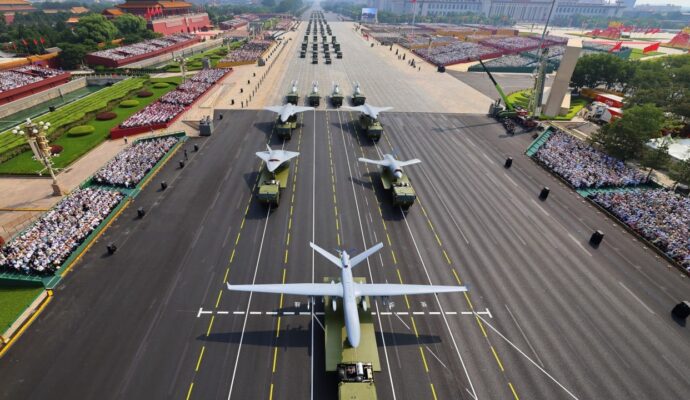
Proclamations about the inevitability of China’s dominance of the global economic system, or the so-called Chinese century, were made long before Donald Trump’s attempts to stymie its trade with the US.
Common concerns about coercive politics and human rights aside, some notions of China as an unstoppable economic, technological and military behemoth sit alongside others focused more on an increasingly sclerotic, over- centralised political economy, that depends on wasteful economic stimulus, and features poor governance and institutions. The fusion of these notions suggests that we may already have reached “peak China”.
At the time of the 2008 financial crisis, China’s official, and probably exaggerated, GDP was about $14tn (£10.4tn), or about a third of that of the US. By 2021, it had risen to three-quarters of America’s $23.7tn, and there was widespread talk about in which year of the 2020s China would overtake the US.
By 2024, however, China’s $18tn economy had fallen back to just over 62% of the almost $30tn of the US. In GDP per head terms, China is still no more than 20% of the US.
A rising China uniquely lifted its share of global GDP between 2000 and 2021 from 3.5% to 18.5%, but since then it has slipped back to about 16.5%. There is no question that China’s rise is at least stalling. The working age and total population are now in relentless decline. The urbanisation rate, just over 60%, is flattening out. Productivity growth has stalled.
The long surge in China’s share of global manufacturing exports and production has levelled off, and the external environment for China is now much harder and more hostile. A 90-day pause in the US-China tariff war is due to expire on Tuesday, and it is unclear whether it will be extended.
Part of the problem is that China has reached the end of extrapolation. The past really is another country. Some of its growth engines could only ever fire once: for example, enrolling children in primary and secondary schools; improving basic healthcare; reaping the demographic dividend of falling dependency rates; and moving people from the countryside to higher-productivity, urban jobs.
Some growth also flowed from a number of highly effective policy initiatives such as those captured by the era of reform and opening-up, inspired by Deng Xiaoping: joining the World Trade Organization; creating a genuine market in housing, and exploiting globalisation. None of these can happen again.
China’s growth model, moreover, based on unrealistically high growth targets and uniquely high investment and savings rates, is becoming swamped by stagnant productivity, debt service difficulties and misallocation of capital.
At the Central Economic Work Conference in December last year, China’s premier, Li Qiang, summarised his country’s condition by saying candidly that the foundation for sustained economic recovery and growth was not strong, demand was weak, and there were pressures on job creation and “fiscal difficulties” among several local governments.
Although consumption has been made a top priority, actual policy measures to make it so have been underwhelming, partly because redistributing economic power to companies and citizens also entails changes in political power, which are anathema to the Communist party.
The structural downturn in the property sector, which at one stage accounted for more than a quarter of the economy, is likely to shrink for the foreseeable future, dogged by lower rates of household formation and smaller cohorts of first-time buyers, linked to demographics as well as a chronic oversupply of unsold and uncompleted real estate.
The government has softened its approach to private enterprises and approved a new private economy promotion law to bolster AI, technology clusters and hubs, and reduce regulatory barriers. Low business confidence, though, is not really about regulations but about political interference, and weak demand and profits.
The super-globalisation from which China benefited is pretty much over, and the world’s biggest export nation is now confronted by a fragmenting and fracturing trade and investment environment in which commerce within blocs is holding up better than trade between them.
China’s bloc includes a majority of the world’s population, but very small proportions of world GDP, investment and wealth. At the same time, developed and middle-income economies, as well as emerging nations, are pushing back against what they perceive to be predatory trade policies by a mercantilist China.
Peak China does not stem from doubts about China’s industrial prowess and pedigree. It is, though, about two things that can be simultaneously true: China can have world-class companies and trendsetters such as Alibaba, Tencent, BYD, CATL, Huawei and DeepSeek, as well as an economy with systemic imbalances, debt capacity limits, and political and economic contradictions.
Put another way, China has islands of technological excellence and leadership in a sea of macroeconomic turbulence and trouble. This characterised Peak Japan 40 years ago, and China is shaping up for the encore.
George Magnus is a research associate at Oxford University’s China Centre and at Soas University of London. He is the author of Red Flags: Why Xi’s China is in Jeopardy

